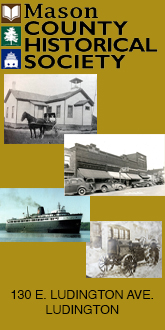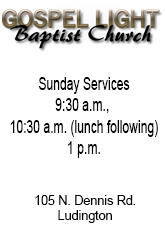
SS Muskegon
This Maritime History Blog is a presentation of the Mason County Historical Society’s Port of Ludington Maritime Museum, ludingtonmaritimemuseum.org, located at 217 S. Lakeshore Dr., Ludington.
By Rob Alway, Editor-in-Chief
The service of the SS Pere Marquette 16, the only wooden car ferry to operate in the Ludington fleet, was a mixture of historical significance — both good and bad. The ship, under a different name, was one of the first of two car ferries to sail on Lake Erie. It was the first car ferry to sail out of Muskegon and it was the only wooden ship in the Pere Marquette Railway ferry fleet. But, its service was plagued with misfortune that climaxed with going down in history as the first Great Lakes car ferry to experience a crew death.
The Pere Marquette 16 was a wooden ship designed by famed naval architect Frank E. Kirby, who designed the first Lake Michigan car ferries Ann Arbor No. 1 and No. 2 and the famed Bob-Lo boats that transported passengers from Detroit to Bois Blanc Island, Ontario, among many other late-19th century and early 20th century steamships.
The PM 16 began its existence as the Shenango No. 2. It was built by the Craig Ship Building Co., Toledo, Ohio, in 1895 for the United States & Ontario Steam Navigation Co.

Shenango No. 2, foreground, Shenango No. 1, background
SS Shenango No. 2
The Shenango No. 2 was 282.6-feet long, with a breadth of 53-feet and a depth of 19.4 feet. Like the first two Ann Arbor Railway car ferries, the Shenango was equipped with an ice breaking propeller in its bow. It was 22 feet longer than the Ann Arbor No. 1 and 18 feet longer than the Ann Arbor No. 2. Its engines were built by S.F. Hodges & Co., Detroit and its four Scotch boilers were built by Globe Iron Works.
The United States & Ontario Steam Navigation Co. was a subsidiary of the Pittsburg, Shenango & Lake Erie Railway, the predecessor of the Bessemer & Lake Erie Railway. The company was formed to operate ferries on Lake Erie from Conneaut, Ohio to a connection with the Grand Trunk Railway at Port Dover, Ontario 65 miles to the northeast.
The new route represented saving 82 miles on the haul from the Pennsylvania coal fields to the steel mills at Hamilton. The company anticipated that traffic would require three trips per day in each direction. Accordingly, it planned a pair of ferries, each of which would make one and a half trips per day.
Both ships were plagued with misfortune and turmoil before they were even built.
Frank E. Kirby was associated with the shipbuilding firm Detroit Dry Dock and had expected the bid for the two ships to go to that company. When the order was given to Craig Ship Building, Kirby underwent a struggle to receive his design fee of $6,000.
The first ship, Shenango No. 1, went into service in September, 1895, and Shenango No. 2 followed in January, 1896. They were both nearly identical. The new ferries could handle about 26 cars each at a speed of 10 to 11 knots (12 to 13 mph). They were expected to make the trip in 5.5 to 6 hours but Shenango No. 1 made its first round trip in 13 hours.

SS Shenango No. 2 stuck in the ice.
The first mishap of the Shenango No. 2 occurred within a month of it entering service. Contrary to the intentions of its designer and builder, the new ships quickly proved themselves poor ice breakers, presumably because of lack of power. They were initially reported to be rated at 2,000 horsepower each, but both demonstrated an utter inability to work out of ice entrapments.
On Feb. 9, 1896, Shenango No. 2 broke its starboard screw and damaged its port screw in the ice on its regular route. It went to Cleveland for repairs. The dry docks there were too small and the boat sailed for the Craig yard in Toledo on Feb. 12, at 3:35 a.m.
It made slow progress in the ice until, about five miles west of Pelee Island, it lost its forward screw, making it essentially helpless, being unable to make any progress in the ice. It was shortly totally engulfed in a windrow where it remained for a week.
Craig had retained a financial interest in the ships and was eager that Shenango No. 2 be dry docked. Since the ship showed little prospect of reaching Toledo, the ice-breaking passenger ferries Promise and Fortune were dispatched from Windsor, Ontario on Feb. 19, 1896 to extricate it and tow it to Detroit. They reached the Shenango No. 2 on Feb. 20 at 6:15 p.m. and began their efforts to work it free at 7 a.m. on the following day. By 5 p.m. they had it out of the windrow, but they lay off Pelee Island overnight and spent Feb. 22 inching toward the mouth of the Detroit River. They put into Amherstburg, Ontario for coal on the morning of Feb. 23 and by evening arrived at Detroit Dry Dock where the ferry was repaired. A towing bill of $5,000 was added to the repair expenses.
Traffic on the newly established Lake Erie route proved adequate for just one vessel and on Dec. 1, 1897, the Shenango No. 2 was leased to the Detroit, Grand Rapids, & Western Railway. On Dec. 27, 1897, the Shenango No. 2 became the first car ferry to operate from Muskegon to Milwaukee. The DGR&W purchased the ship a year later and renamed it Muskegon on Dec. 9, 1898.
The life of Shenango No. 1 was cut short. It passed hands to the Marquette & Bessmer Dock & Navigation Co. on its formation in 1903 but, unfortunately, it burned at Conneaut on March 11, 1904. It was a total loss.

Schematic replica of the PM 16
SS Muskegon
The Pere Marquette Railway was created on Jan. 1, 1900 with the merger of the Flint & Pere Marquette, Chicago & West Michigan, and Detroit, Grand Rapids and Western (Detroit, Lansing & Northern) railroads. With this merger came the acquisition of the Ludington-based fleet that included the steel car ferry SS Pere Marquette, built in 1897, and the break-bulk freighters (see related story) Flint & Pere Marquette Nos. 2, 3, 4, and 5 and the Muskegon-based car ferry SS Muskegon.
As a result of the merger, the railroad consolidated its eastern Lake Michigan terminus to Ludington and moved the SS Muskegon to Ludington. Though traffic from Muskegon was adequate, the railroad had a couple reasons for adding another ship to Ludington. The more ships move in and out of a harbor in winter months, the easier it is to maintain a channel through the ice. Therefore, a single terminus on the east side of the lake was preferable to two. Since pack ice formation is more severe on the east shore than the west because of prevailing winds, having several western terminals presents no similar problem. Also, dispatching out of a single eastern terminus would offer the railroad a higher degree of flexibility than was possible with two terminals.
Traffic to Manitowoc was proving too much for Pere Marquette’s two trips a day even in 1900. The railroad intended to continue service out of Muskegon in the summer months and left its slip intact. PM ferries ran in the summer from Muskegon, particularly for movements of Michigan fruit to Milwaukee in the harvest season until 1908. Thereafter all service was provided from Ludington and the Muskegon slip was removed.
In addition to Lake Michigan service, the PMRR was starting to get into the ferry business on the St. Clair River, boats that were very different designs than the larger Lake Michigan ferries.
In 1901 the PMRR changed the numbering schemes of its ship, adopting a system similar to how it named locomotives. The break-bulk freighters would be numbered 5 and lower; the Detroit River ferries would be 14 and lower; the Lake Michigan ferries would be 15 and above.
The SS Muskegon became the SS Pere Marquette 16 with the newest vessel, the Pere Marquette 17 scheduled to arrive that year. Three other ships would eventually join the fleet, the PM 18 in 1902, the PM 19 and PM 20 in 1903.
The SS Pere Marquette, designed by naval architect Robert Logan, had entered service in 1897 as the first steel car ferry on the Great Lakes and the first car ferry operated by the Flint & Pere Marquette Railway. It retained the name Pere Marquette until 1924 when it officially became the Pere Marquette 15. Logan had also designed the PM 17, 18, 19, and 20, along with the Marquette and Bessemer No. 2 (built in 1905), and the Manistique Marquette and Northern 1 (built in 1903, later renamed the Milwaukee in 1908), among others. Notably, the M&B No. 2 sank in 1909, the PM 18 sank in 1910 and the Milwaukee sank in 1929. Though slightly confusing, the respective railroads each ordered replacement ships naming them the Marquette and Bessemer No. 2 and the Pere Marquette 18. The Milwaukee was later replaced with the City of Milwaukee, which is now a museum ship in Manistee.

Capt. George L. Thompson
Captain George L. Thompson
Another unique aspect of the PM 16 was that, with the exception of its first two years, the ship had the same master throughout its entire existence as a car ferry, even as it passed hands through three companies and changed names an equal amount of times.
The first skipper of the Shenango No. 2 was Frank A. Dority, who commanded multiple Pere Marquette ships. But, George L. Thompson was truly the master of the ship, as he operated it from 1897 until it was laid up in Ludington 10 years later. Thompson had supposedly been offered other commands but insisted on staying with the PM 16.
George L. Thompson was born on Dec. 17, 1857, the son of James and Ellen (Lattimer) Thompson, in Ogdensburg, NY, along the St. Lawrence River. When he was still a boy, his family moved to Michigan where he attended public schools in Detroit, Saginaw and Port Huron.
In 1877, at the age of 20, he began working for the Northwest Transportation Co. with the goal of becoming a steamship captain. He started as a watchman on the steamer Quebec. He remained at Northwest for three years, becoming a wheelsman, then second mate on the steamer Ontario.
In August, 1881 he married Edith R. Flood of Algonac, Mich., the daughter of retired Capt. Daniel Flood. The Thompsons had three children, William G., Lulu and Hazel. The family called Milwaukee home.
Thompson then worked on the schooner Seaman for two seasons. In 1882, he began working on the SS Northerner as wheelsman, and in 1883 the steamer Horace B. Tuttle before moving to the SS Iron Age.
He then worked on a steamship called Milwaukee (not the car ferry discussed in this article) where he also served as a wheelsman. He was then on the Fountain City for three seasons and became its second mate and then first mate. He finally became a captain when he served on the Colorado, first as second mate, then as first mate, and finally as captain.
In 1892, he was captain of the Osceola and then returned as captain of the Colorado in 1893.
Also that year, he began his car ferry career serving as captain of the Ann Arbor No. 1 and Ann Arbor No. 2. He held captain positions also on the schooner George W. Johnson in 1894, the Rhoda Emily in 1895 and then the George L. Colwell.
In 1897, he became master of the Shenango No. 2, two years after the ship began service.

PM 16 aground
The PM runs aground off Ludington
For many years, a sand bar just outside the Ludington pier heads plagued ships. By 1904, the Ludington Record Appeal reported that three ships had run aground in nearly the same place, with two of the incidents resulting each in a death of a crewman.
The first such incident happened on Dec. 31, 1884 when the Flint & Pere Marquette No. 1 break-bulk freighter, under the command of Capt. Hugh Clark, ran into the sand bar, in between the two pier heads, as it entered the harbor at daybreak. The undertow quickly carried the ship outside where it had been scuttled. The boat remained scuttled until spring when it was then taken to Milwaukee and repaired.
While the F&PM No. 1 had the unfortunate distinction of being the first ship in the railroad’s fleet to experience an accident that resulted in a crew death, the PM 16 will go down in history as the first Lake Michigan car ferry to be involved in an accident that resulted in a crew death.
The circumstances of the two incidents were nearly identical.
On Dec. 21, 1901 PM 16 left Milwaukee at 4 p.m. with 26 cars. It encountered a southerly gale, with winds of 45 to 50 mph, mid-lake but reached Ludington shortly before midnight without any particular difficulty.
About 350 feet off the pier head, the trough of a wave drove the ship down hard against a sandbar which had built up, causing it to lose its way and drift helplessly. This was one of the worst of this familiar sort of accident, for the impact broke not only the ship’s back but also its main steam connections between the boilers and the engines.
Escaping steam scalded three of its engine room crew, one of whom, Michael Taeff of Chicago, was burned beyond recognition and, according to newspaper accounts, died shortly after the incident occurred. Taeff, on his first trip, apparently could not find his way out of the engine room to safety. Newspaper accounts stated Taeff was married and had two young children.

PM 16 circa 1902
Also injured was coal passer Frank Leow of Milwaukee and William Webber of Tonawanda, NY, whose hands and face were burned. One newspaper account stated that he would likely die due to inhaling steam. However, no reference is made later that he passed away as a result of the accident.
The PM 16 was still often referred to as the Muskegon as stated in one news wire story found in multiple newspapers:
“Four men fought for life against scalding steam and darkness in the bowels of a big lake steamer that was wrecked while trying to enter this harbor last night. In the mad scramble for safety all were more or less burned, one was killed and two were seriously injured. Panic followed the grounding of the steamer and the simultaneous bursting of the main steam pipe of the engine. After the damage had been done and the panic had subsided dead and injured were forced to remain on the rocking and hapless vessel all night. Every wave washed the ice covered decks and the men were without fire and in total darkness. As a result the living were nearly froze before they were rescued by the life guards over the breeches buoy this morning. The men composed the crew of the car ferry Muskegon of the Pere Marquette line. The steamer struck on a bar and went ashore 100 feet from the end of the north pier. It will probably be a total loss and the total damage will be $200,000.”
The ship, having no power, was driven against the north breakwater, where pounding by the waves opened several holes in its port forward quarter.
Capt. Thompson, seeing that the ship was in imminent danger of breaking up, ordered it scuttled. It sank in 16 feet of water about 100 feet off the pier head, exposed to the wind and waves without heat or light.
The engine room crew took shelter on the tops of cars on the main deck, lifting the three injured men to positions of relative safety. With the exception of Taeff. the rest of the crew of 34 survived. The seas showered tons of ice on the ship.
Lighthouse Keeper E. Slyfield notified Pere Marquette Superintendent of Steamships W.L. Mercereau and Chief Steward James Magmer of the incident. They went to the pier to assess the situation.
At daybreak, the lifesaving crew, under Ben Carlson, fired a line to remove the crew.

PM 16 docked
“The steamer had been scuttled and lay hard aground,” the news wire article stated. “Owing to the churning ice it was impossible to reach the wreck in a small boat and the only alliterative was the breeches buoy. The life savers had served in the local station and knew what to do. A shot was fired from the shore, but the line parted. The second shot was more successful, the line falling across the car ferry’s spar deck. Cable communication between the boat and the pier was quickly established and over this line the entire crew of 34 men were hauled to the pier. The rescue occupied four hours of time.”
The Muskegon Chronicle reported that the ship contained 26 loaded cars, eight which contained beef. The value of the cargo was $40,000 ($1.5 million in 2025).
“Capt. Thompson was the last man ashore,” the Chronicle reported. “He could not conceal his emotion and he cried when he left the steamer.
“When questioned regarding the cause of the accident, Supt. Mercereau of the Pere Marquette steamship line declared that it was an accident which might befall any boat. They all knew that the bar existed, but it was a long chance that any would be submerged at that exact spot.
“‘Absolutely no blame can be attached to Capt. Thompson,’ said the superintendent. ‘He did all that any man could do under the circumstances.’
Most newspapers predicted the ship was a total loss. Capt. James Reid of Sarnia, Ont. was called to oversee the salvage operation. The PM 16 was freed on Dec. 28 by the SS Pere Marquette, commanded by Capt. John Ackerman with the assistance of the tugs Sport, W.H. Meyer, John C. Mann and Frank Canfield. On Dec. 29, the 16 was berthed at No. 1 slip for inspection and removal of its rail cars.
On Jan. 1, 1902, the ship left Ludington in tow of the PM 3 and PM 4 with the tug W.H. Meyer following behind to steer the disabled ship. They arrived in Milwaukee at 5 p.m. after 14 hours.
The PM 16 was repaired at the South Yard of the Milwaukee Dry Dock Co. at a cost of more than $80,000 (over $3 million in 2025). The ship was then returned to service.
Just a year later, on Jan. 21, 1902, Pere Marquette No. 3 (formerly called Flint & Pere Marquette No. 3), ran aground in the same place at the Ludington pier heads. It was under the command of Capt. Frank A. Dority, who had been the first skipper of the Shenango No. 2/PM 16. While the incident resulted in major damage, there were no deaths.
To follow in line with the bad luck of the PM 16, Capt. Thompson was run down by a train in late 1902 near the Maple Street Dock in Milwaukee. The accident resulted in one of his legs being amputated. Within the two months of the accident, he returned to retake command of the PM 16.

Harriet B
The Marquette & Bessemer Dock & Navigation Company
The Marquette & Bessemer Dock & Navigation Company was formed as a joint venture between the Pere Marquette Railway and the Bessemer & Lake Erie Railroad (which had succeeded the bankrupt Pittsburgh Shenango & Lake Erie Railroad) in 1902.
In 1903, to help with ferry traffic in the summer months between Conneaut, Ohio and Port Stanley, Ohio, the PM 16 was brought back to its original port to assist its sister ship, the Shenango No. 1.
The PM 16 then returned to Ludington in September 1905. It was then leased to the Ann Arbor Railway in 1906 for service out of Frankfort/Elberta.
It was laid up in 1907 and then sold in 1917 to Peter Edwards of Sault Ste. Marie, Mich., who sold her to the Hammermill Paper Company of Erie, Penn.
The ship’s name was changed to Harriet B on March 21, 1918 and its superstructure was cut down for use as a steam barge. The engines were removed and it was enrolled as an unrigged barge on June 18, 1921.
The Harriet B foundered on May 3, 1922 in Lake Superior near Two Harbors, Minn.
Sources: Mason County Historical Society Rose Hawley Archives, newspapers.com
The Mason County Historical Society is a non-profit charitable organization that was founded in 1937 that does not receive any governmental funding. It owns and operates the Port of Ludington Maritime Museum in Ludington, Historic White Pine Village in Pere Marquette Township, and The Rose Hawley Archives and the Mason County Emporium and Sweet Shop in downtown Ludington.
The Port of Ludington Maritime Museum, located at 217 S. Lakeshore Dr., Ludington, is currently open Thursday through Saturday from 10 a.m. to 5 p.m. until Tuesday, May 27 when it will be open Tuesday from 11 a.m. to 7 p.m. and Wednesdays through Saturday from 10 a.m. to 5 p.m.
For more information about donating to and/or joining the Mason County Historical Society, visit masoncountymihistory.org.
__________________________
Please Support Local News
Receive daily MCP and OCP news briefings along with email news alerts for $10 a month. Your contribution will help us to continue to provide you with free local news.
Payment can be made monthly via credit card, bank account, PayPal or Venmo through recurring email invoicing. These payments can be set up for autopay each month.
To sign up, email editor@mediagroup31.com. In the subject line write: Subscription. Please supply your name, email address, mailing address, and phone number (indicate cell phone). We will not share your information with any outside sources. For more than one email address in a household, the cost is $15 per month per email address.
Alternative methods:
PayPal Monthly Payment. Click this link.
We can send you an invoice for a yearly payment of $120, which you can conveniently pay online or by check. If you are interested in this method, please email editor@mediagroup31.com and we can sign you up. You can also mail a yearly check for $120 to Media Group 31, PO Box 21, Scottville, MI 49454 (please include your email address).
Payment must be made in advance prior to subscription activation.
We appreciate all our readers regardless of whether they choose to continue to access our service for free or with a monthly financial support.
_____
This story and original photography are copyrighted © 2025, all rights reserved by Media Group 31, LLC, PO Box 21, Scottville, MI 49454. No portion of this story or images may be reproduced in any way, including print or broadcast, without expressed written consent.
As the services of Media Group 31, LLC are news services, the information posted within the sites are archivable for public record and historical posterity. For this reason it is the policy and practice of this company to not delete postings. It is the editor’s discretion to update or edit a story when/if new information becomes available. This may be done by editing the posted story or posting a new “follow-up” story. Media Group 31, LLC or any of its agents have the right to make any changes to this policy. Refer to Use Policy for more information.






















































.png)
